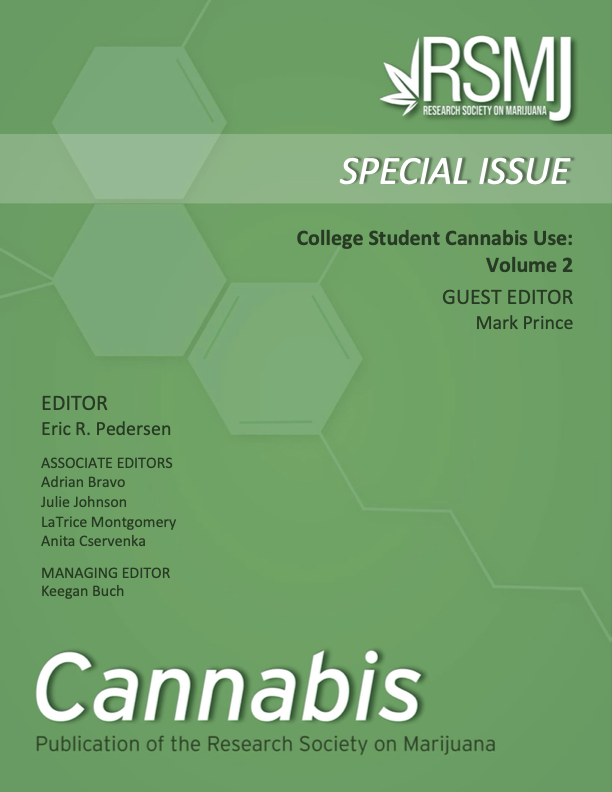Risk Factors for Quantity of Cannabis Use Per Day among College Students Who Violated Their University Drug Use Policy
Abstract
Background: Cannabis use among college students represents a continued public health issue. The objective was to assess risk factors and reasons for cannabis use among students who violated their university’s drug use policy, and whether risk factors influenced cannabis use quantity. Methods: This cross-sectional survey study included 99 college students enrolled at a large U.S. public university. Descriptive statistics were calculated, and an ordinary least squares regression analysis was conducted. Results: Students reported using cannabis an average of 7.4 (SD = 10.2) days in the past month, with 8% reporting daily use. On average, students consumed slightly over 0.25 (SD = 0.25) grams per day, with 40% reporting greater than one gram per day. The average age of onset of cannabis use was 16.8 (SD = 1.8) years old. The top reasons for cannabis use were to: relax or relieve tension (75.8%), feel good or get high (62.6%), and have a good time with friends (60.6%). Students perceived an average of 47% of their peers engaged in past-month cannabis use and only slight risk was associated with regular use. Students perceived their loved ones would mostly approve of a reduction in their cannabis use. Regression results indicated past-month cannabis frequency (p = .002) and being of racial/ethnic minority descent (p = .05) were positively associated with quantity of cannabis per day, while perceived risk of regular cannabis use (b  = -0.21) was negatively associated. Conclusion: Evidence-based cannabis interventions for students who violate their university’s drug use policies are critically needed that aim to reduce cannabis use and mitigate its associated negative consequences.
Downloads
Published
Issue
Section
License
Copyright (c) 2024 Benjamin N. Montemayor, Anas Khurshid Nabil, Ashley L. Merianos

This work is licensed under a Creative Commons Attribution-NonCommercial-NoDerivatives 4.0 International License.

